The concept of beauty
Beauty, the ideal that we all grasp but always find difficult to describe in specifics, is forever etched in our mind. What defines beauty? Who says what is beautiful and what is not?
A couple of years ago, we were viewing the magnificent murals of Angkor Wat, admiring the intricately carved apsaras (mythical nymphs) that grace the flaking sandstone walls, when our guide, pointed to us one particular figure. “That,” he said, “is for me the most beautiful apsara in all of Angkor.”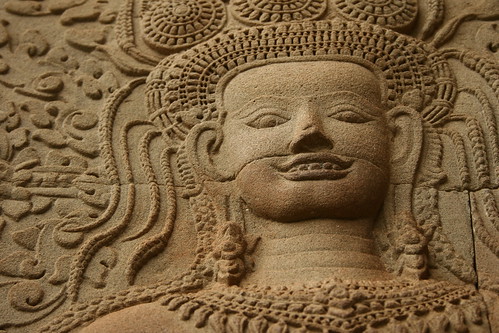
Canon EOS 350D Digital, 1/100s, f/7.1, 55mm, ISO 100, -1.0EV (no post-processing)
the famous toothy apsara in the Angkor Wat, Siem Reap, Kampuchea
An apsara, by virtue of her divinity, is regarded as the epitome of grace and beauty and there are the features that are recognizably common: A round face with puffed cheeks. A bulging forehead. Almond eyes that definitely are Asian. Full lips that would put collagen-injected puckers to shame. Buxom fertile breasts. Elongated ear lobes stretched by the weight of the heavy earrings.
However, I noticed what seemed to be some unique features in this particular apsara: A high-bridged and aquiline nose, which almost is not Asian. A cleft chin. And most peculiar of all, an open smile which revealed straight even teeth.
Against other apsaras in the same wall, she is a standout. Take the two apsaras shown below for instance. Even by today’s standards, they remain verisimilitudes of pulchritude. Yet one gets the feeling that when compared to the smiling apsara, the two could only appear generic and typical. 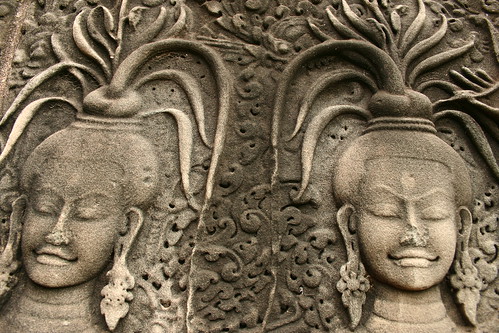
Canon EOS 350D Digital, 1/80s, f/5.6, 18mm, ISO 200, -1/3EV (no post-processing)
typical countenance of apsaras in the Angkor Wat, Siem Reap, Kampuchea
Leaving the temple, I shelved these observations. But just recently, back in the confines of home, I searched the internet and found out that the smiling apsara is indeed a famous relief, cited in travel books. It is one of only ten apsaras who bear toothy smiles. (Online sources would often point to only two but dewata.org has surveyed 10). Tourists actually spend time to look for this one and if their guide is not knowledgeable to this trivia, they often could not locate it.
What drove the artist to carve this toothy apsara? From what I read, Khmer tradition calls for apsara dancers never to show their teeth during a performance. Grinning with an open mouth is also generally considered impolite in Asia. As a child, we were taught to always cover our mouths with our hands to hide the teeth.
The contradiction comes back to what construes as beauty. Is it the allure of mystery? Or can beauty be bold and in your face? In the art of Angkor, mystique occasionally is out in the open, not just suggested, not coy. Honesty can still be beautiful, now and in the past.
more apsaras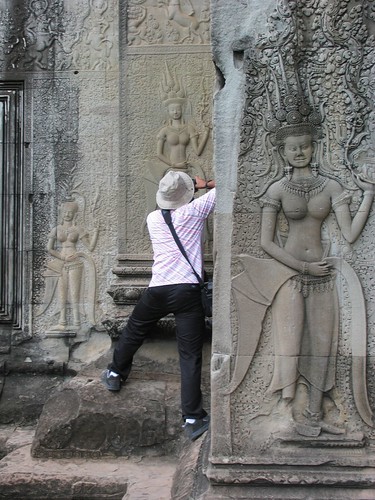
me, taking a picture of the toothsome apsara, as taken by my wife
travel tip: the Apsara is on the wall of the first exterior gallery facing to the east. Photographing the famous toothsome apsara was challenging. It is carved high on the wall and shooting it at eye level was difficult. I had to wedge my feet on the ledge and tiptoed as much as I could, to get a more level vantage point.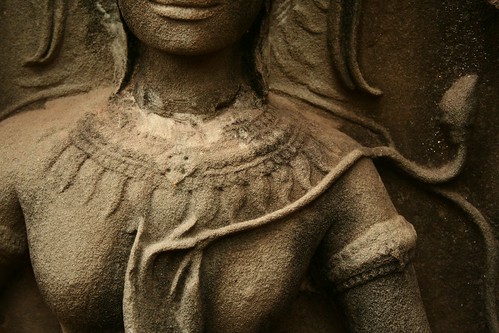
Canon EOS 350D Digital, 1/125s, f/5.6, 45mm, ISO 400, +2/3 EV, (no post-processing)
an apsara at the temple of Ta Prohm, Siem Reap, Kampuchea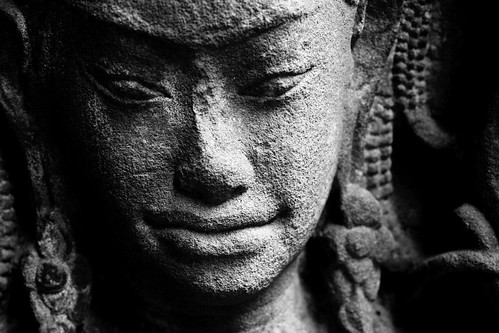
Canon EOS 350D, 1/40s, f/5.6, 38mm, ISO 400, -1/3 EV
an apsara at Angkor Thom, Siem Reap, Kampuchea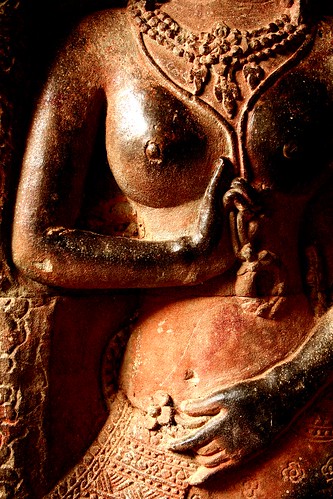
Canon EOS 350D, 1/40s, f/5.6, 30mm, ISO 400
an apsara at Angkor Wat, red from the rubbing of human hands, Siem Reap, Kampuchea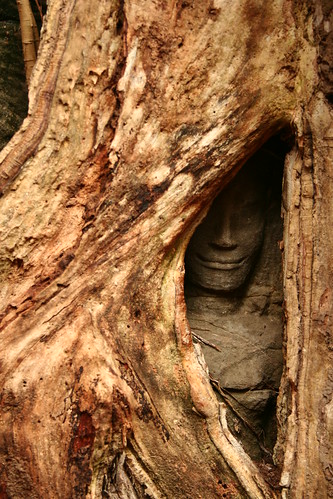
Canon EOS 350D, 1/15s, f/5.6, 47mm, ISO 100, +1/3 EV (no post-processing)
an apsara overcome by the creeping jungle at Ta Prohm, Siem Reap, Kampuchea






1 comment:
Charming detailed I love.
Post a Comment